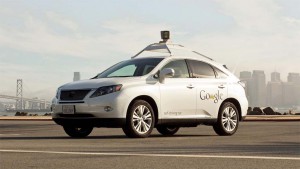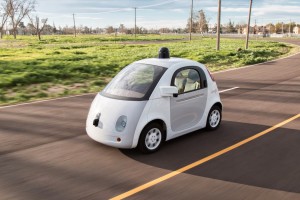Google has confirmed another one of its autonomous vehicle prototypes was involved in a crash last week. It marked the twelfth collision involving the vehicles since the Silicon Valley giant began testing the technology on public roads six years ago.
The issue has generated a number of headlines in recent weeks, and became a hot topic during this week’s Google shareholder’s meeting, especially when a safety advocate pressed company officials for more details.
That fired up Google co-founder Sergey Brin, who insisted that, “We don’t claim that the cars are going to be perfect.” While some autonomous advocates have been building up the technology as a way to eliminate highway fatalities, Brin insisted, “Our goal is to beat human drivers.”
Under pressure, Google has offered an increasing amount of details about the first 11 crashes, though the firm so far has declined to release full accident reports. Like the state, the company has said that would compromise the privacy of the other drivers involved in the accidents. But Brin said at the Wednesday meeting, “I suppose we could give you more detail and we’re open to that.”
For now, Google is saying that crash number twelve is much like all the earlier ones, the result of other drivers. In this case, Brin noted, the Google car was rear-ended while waiting for a traffic light to change. None of the dozen crashes has been described as serious, and the majority of them have occurred under similar circumstances.
(For more on the initial series of Google crashes, Click Here.)
So far, the company says, it has logged 1.7 million miles during the testing of its vehicle program – about 1 million of those under autonomous operation — which would still make its safety record strong on a per vehicle and per mile basis, according to several safety experts approached by TheDetroitBureau.com.
If anything, Google is planning to move ahead aggressively with its program, and push into still more advanced technology. It has, until now, been using modified versions of conventional vehicles, such as the Toyota Prius. A driver has been behind the wheel at all times, in position to take over in an emergency.
The next stage involves the use of unique prototypes being built for the tech giant by Detroit supplier Rousch. The first few among about 100 of these Google Cars will have conventional pedals and a steering wheel, but if the company can get approval from the State of California most of the prototypes will have no driver-operable controls, just an emergency-off button.
(For more on those fully self-driving Google Cars, Click Here.)
There is a debate among autonomous advocates as to the pace at which such technology would be adopted. Semi-autonomous systems, such as Cadillac’s Super Drive – allowing hands-free freeway operation – could hit the road in the next couple years. Nissan plans a fully self-driving car by 2020. Both would require an operator behind the wheel ready to assume command. The general consensus is that fully driverless vehicles are anywhere from 10 to 20 years away. But there is strong demand, ride-sharing service Uber, for example, talking about switching to such technology to lower costs – and improve safety.
The dust-up at the Google shareholders meeting was touched off by John Simpson, a shareholder who also serves as an advocate for non-profit Consumer Watchdog. The group has frequently criticized Google in recent years.
He stressed the need to get full details on problems involving such game-changing technology as autonomous driving. “When it goes right, that’s wonderful,” Simpson said after the meeting, “and when it goes wrong, we want to know why.”
But Google executives remained upbeat despite the recent concerns. It’s other co-founder, Larry Page, told the assembled shareholders “”everything is getting better, in general, by quite a bit,” thanks to the technology his firm is introducing. “I think we should be optimists and be excited by all the things we are building and contributing to the world.”
(From CarPlay to carmaker? Apple drops hints about its own autonomous vehicle plans. Click Here for more.)



“being better than humans” simply is not good enough for AVs, IMO. Allowing these vehicles to be driven on public roadways without anything but a “kill button” is also unacceptable because it provides no possibility of a driver avoiding and avoidable accident. Should the public be in unnecessary danger while AV developers find the shortcomings or defects in their products?
Being excited about potential benefits to society is fine as long as you operate ethically and responsibly in developing new tech products. AVs without driver controls does not meet the above most basic standards of operation.
Better than humans is never better as far as lawsuits are concerned. In reality, they are always better and the numbers tell the story. And of course they will have a kill switch.
Lack of Situational awareness is a term used with professonal truck drivers that are involved in accidents that are blamed on the truck driver yet the truck driver is at fault. Because as a professional driver a able to recognize a recurring possible accident situtation the truck driver is considered at fault but not ticketed normallt. But the safety committees do. Thats why a expirienced driver will be needed with controls to operate the vehicle.
Lack of Situational awareness is a term used with professonal truck drivers that are involved in accidents that are blamed on the truck driver yet the truck driver is not ticketed or at fault. Because as a professional driver able to recognize a recurring possible accident situtation the truck driver is considered at fault but not ticketed normally. But the safety committees do. Thats why a expirienced driver will be needed with controls to operate the vehicle. In simple terms its called defensive driving. Something as simple as checking the rear view mirror a seeing a vehicle lose control on ice and about to be hit from behind. And moving forward.